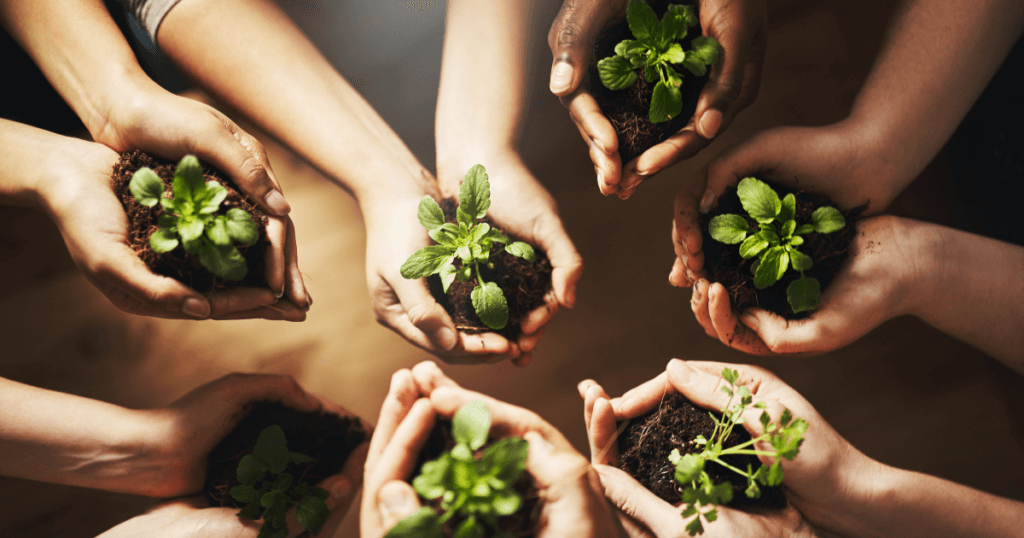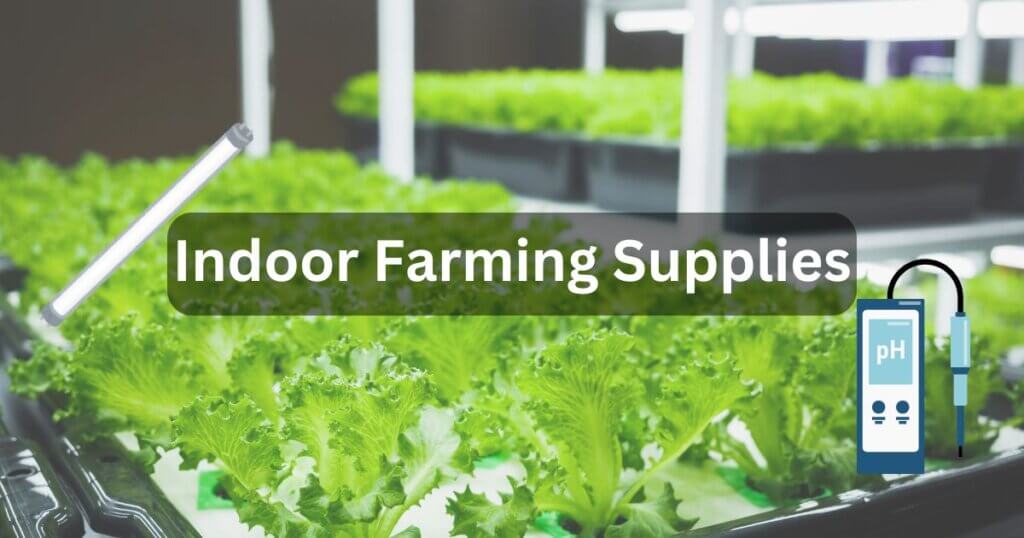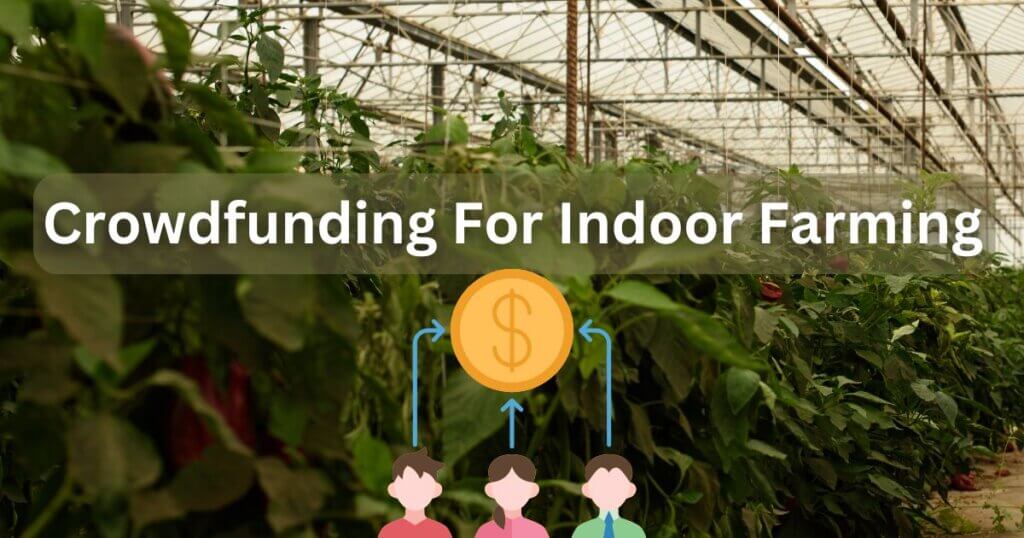10 Sustainable Indoor Gardening Tips

Indoor Farming Hub is an Amazon Associate and earns from qualifying purchases.
Are you a passionate plant lover wanting to create an eco-friendly oasis inside your home? Look no further! This article will explore ten valuable tips to help you embark on your sustainable indoor gardening journey. By adopting these eco-conscious practices, you can cultivate a thriving indoor garden and contribute to a greener and more sustainable planet. So, let’s dive in and discover how to transform your indoor space into a vibrant, sustainable haven of greenery.
Table of Contents
1. Choose Native and Low-Maintenance Plants
When selecting plants for your indoor garden, opt for native species as they naturally adapt to the local climate and environmental conditions. Native plants have evolved to thrive in their specific regions, requiring less water, fertilizer, and pesticide applications, which makes them an excellent choice for sustainable indoor gardening. In addition to native species, select low-maintenance varieties that can flourish with minimal care, reducing the need for frequent watering, pruning, or fertilization. By prioritizing plants that are both native and low-maintenance, you create a resilient indoor garden that remains lush and vibrant with minimal effort.
2. Create a Green Corner with Vertical Gardening
Utilizing vertical space is an effective way to maximize the potential of your indoor garden, especially in small living areas. Vertical gardening not only enhances the aesthetic appeal of your space but also optimizes limited room, allowing you to cultivate a variety of plants without cluttering your floors. Installing vertical planters, wall-mounted shelves, or hanging baskets enables you to grow herbs, flowers, or small vegetables while maintaining an organized and visually appealing setup. By creatively incorporating vertical gardening techniques, you can cultivate a lush green corner that adds vibrancy and freshness to your indoor environment.
Mr. Stacky Vertical Planter (5-tier vertical gardening system) planter is perfect for creating a lush green corner indoors without taking up floor space. These planters are easy to mount and ideal for growing herbs, succulents, or small flowers.
3. Harness Natural Light for Plant Growth
Proper lighting plays a crucial role in the success of indoor gardening, as plants rely on light for photosynthesis and overall growth. Position your plants near windows that receive ample natural sunlight to ensure they get the necessary energy to thrive. East or south-facing windows are usually the best choices, as they provide consistent, balanced light exposure throughout the day. If natural light is insufficient, supplement it with energy-efficient LED grow lights that mimic the full spectrum of sunlight, promoting healthy plant growth without significantly increasing energy consumption.
When natural sunlight is limited, GE BR30 Full Spectrum LED Grow Light Bulb ensures plants receive the necessary energy for robust indoor growth. It’s energy-efficient and adjustable.
4. Implement Water-Wise Practices
Conserving water is a fundamental aspect of sustainable indoor gardening, ensuring that resources are used efficiently while maintaining plant health. One effective method is to collect and reuse rainwater or graywater from household activities like dishwashing, reducing dependence on tap water. Additionally, employing efficient watering techniques such as drip irrigation or self-watering systems ensures that plants receive the right amount of moisture without excessive waste. By implementing these water-wise practices, you can minimize your environmental footprint while keeping your indoor garden hydrated and flourishing.
This Lechuza Classico Self-Watering Planter automatically regulate moisture levels, reducing water waste and maintenance time.
5. Embrace Organic Pest Control Methods
Pests can pose a significant challenge in indoor gardening, but managing them without resorting to harmful chemicals is essential for maintaining a healthy ecosystem. One effective approach is companion planting, where specific plants are grown together to deter pests naturally, reducing the need for synthetic pesticides. Introducing beneficial insects such as ladybugs or predatory mites can also help control pest populations without disrupting the garden’s natural balance. Additionally, homemade remedies like neem oil or soap sprays provide a safe and eco-friendly way to protect plants from infestations while preserving their health and vitality.
A 100% pure neem oil spray that serves as a natural and effective solution to prevent and manage pests without harsh chemicals.
6. Repurpose and Upcycle Containers
Instead of purchasing new pots and containers, get creative by repurposing household items to serve as unique plant containers. Old jars, teacups, tin cans, or wooden crates can be transformed into charming planters, adding a touch of personality and sustainability to your indoor garden. Not only does upcycling minimize waste and reduce environmental impact, but it also allows you to experiment with different design aesthetics without additional costs. By breathing new life into discarded objects, you create a garden space that is both functional and visually appealing while promoting eco-conscious habits.
For example, a small, odor-free compost bin that fits neatly on kitchen counters, making it easy to collect scraps for composting and enrich indoor garden soil.
7. Compost for Nutrient-Rich Soil
Creating nutrient-rich soil is essential for promoting healthy plant growth, and composting is one of the best ways to achieve this naturally. Start by composting kitchen scraps such as fruit peels, vegetable leftovers, coffee grounds, and eggshells, along with dry leaves and organic matter. Composting not only reduces household waste and diverts it from landfills but also enriches the soil with essential nutrients, enhancing plant vitality and growth. By incorporating compost into your indoor garden, you minimize the need for synthetic fertilizers while fostering a sustainable and self-sufficient growing environment.
8. Practice Crop Rotation and Succession Planting
Employing crop rotation and succession planting techniques can significantly improve soil health and reduce the risk of pests and diseases in your indoor garden. Rotating plant families each growing season prevents nutrient depletion and helps break pest cycles, ensuring long-term soil fertility. Additionally, succession planting—sowing new seeds as soon as a crop is harvested—maintains a continuous supply of fresh produce throughout the year. By implementing these techniques, you can maximize your indoor garden’s productivity while maintaining a balanced and sustainable growing system.
9. Integrate Beneficial Pollinators
Encouraging beneficial pollinators to visit your indoor garden enhances plant pollination, leading to increased yields and healthier plant growth. Incorporate flowering plants such as lavender, marigold, or borage to attract bees, butterflies, and other pollinators that contribute to plant reproduction. Providing a welcoming habitat for these insects not only benefits plant health but also adds vibrancy and biodiversity to your indoor garden space. By fostering a pollinator-friendly environment, you create a thriving and harmonious ecosystem that supports sustainable indoor gardening.
A curated seed mix designed to attract bees, butterflies, and other pollinators, enhancing biodiversity in your indoor garden.
10. Practice Sustainable Harvesting and Seed Saving
When harvesting from your indoor garden, it is important to do so responsibly to ensure continuous plant growth and sustainability. Harvest only what you need while allowing plants to regenerate, ensuring a steady supply of fresh herbs, vegetables, or flowers over time. Additionally, seed-saving techniques can be employed to preserve heirloom varieties, reduce dependence on commercially produced seeds, and maintain plant diversity. By practicing sustainable harvesting and seed saving, you contribute to a self-sustaining garden ecosystem that supports long-term food security and environmental conservation.

These eco-friendly envelopes (150pcs Seed Saving Envelopes) are perfect for labeling and storing seeds from your own garden, helping preserve heirloom varieties.
Conclusion
Creating a sustainable indoor garden is a rewarding and environmentally conscious endeavor. By implementing these ten tips, you can cultivate a thriving indoor garden while minimizing your environmental footprint. From choosing native plants and harnessing natural light to practicing water-wise techniques and embracing organic pest control, every step you take towards sustainability makes a positive impact. So, get your hands dirty, embrace the green, and enjoy the wonders of sustainable indoor gardening.
FAQs – Sustainable Indoor Gardening Tips
1. How Can I Improve Indoor Air Quality in My Garden?
Certain plants are known for their air-purifying abilities, helping to remove toxins like formaldehyde, benzene, and carbon monoxide from the air. Species such as snake plants, spider plants, and peace lilies can significantly improve indoor air quality. Additionally, maintaining healthy soil and proper airflow around plants prevents mold and fungal growth, further enhancing indoor air purity.
2. What Are the Best Soil Alternatives for Indoor Gardening?
Traditional garden soil may not be the best option for indoor plants, as it can be heavy and retain excess moisture. Alternative growing mediums such as coco coir, perlite, vermiculite, or hydroponic systems provide better aeration and moisture control. These options reduce the risk of root rot and create optimal growing conditions for different plant types.
3. How Can I Prevent Overwatering My Indoor Plants?
Overwatering is a common issue that leads to root rot and plant stress. To prevent this, use pots with drainage holes and choose a well-draining soil mix. Additionally, allow the top inch of soil to dry out before watering again. Self-watering planters or moisture meters can also help regulate watering frequency based on plant needs.
4. What Are Some Low-Light Plants for Indoor Spaces?
Not all indoor environments receive abundant natural light, but several plants thrive in low-light conditions. Some great options include pothos, ZZ plants, ferns, and cast iron plants. These species adapt well to indirect or artificial lighting, making them ideal for offices, apartments, and shaded corners.
5. How Do I Prevent Mold and Fungus Growth in My Indoor Garden?
Indoor gardens can sometimes develop mold due to high humidity and poor air circulation. To prevent this, ensure proper ventilation, avoid overwatering, and remove decaying plant material regularly. Using a fan or dehumidifier can also help regulate humidity levels and keep fungal growth at bay.
Useful External Resources for Sustainable Indoor Gardening Tips
- Hydroponic Gardening: Hydroponic gardening is a space-efficient method that uses less water than traditional soil gardening. It also eliminates the problem of weeds. With artificial lighting, hydroponics allows for year-round cultivation.
- Companion Planting with Snake Plants: Companion planting involves growing different plant species together to promote mutual benefits, such as improved growth and pest control. This article discusses suitable companions for snake plants, enhancing the diversity and health of indoor gardens.
- Deer-Resistant Groundcovers: While primarily focused on outdoor gardens, this resource provides insights into selecting plants that deter deer, which can be beneficial for indoor gardeners dealing with pests.
- Low-Maintenance Houseplants: For those seeking plants that require minimal care, this article highlights the resilience of snake plants and other similar species, making them ideal for indoor environments with limited maintenance.
- Deer-Resistant Ground Cover Perennials: This resource offers a variety of deer-resistant ground cover plants, providing options that are both aesthetically pleasing and low-maintenance.
Videos on Sustainable Indoor Gardening Tips











